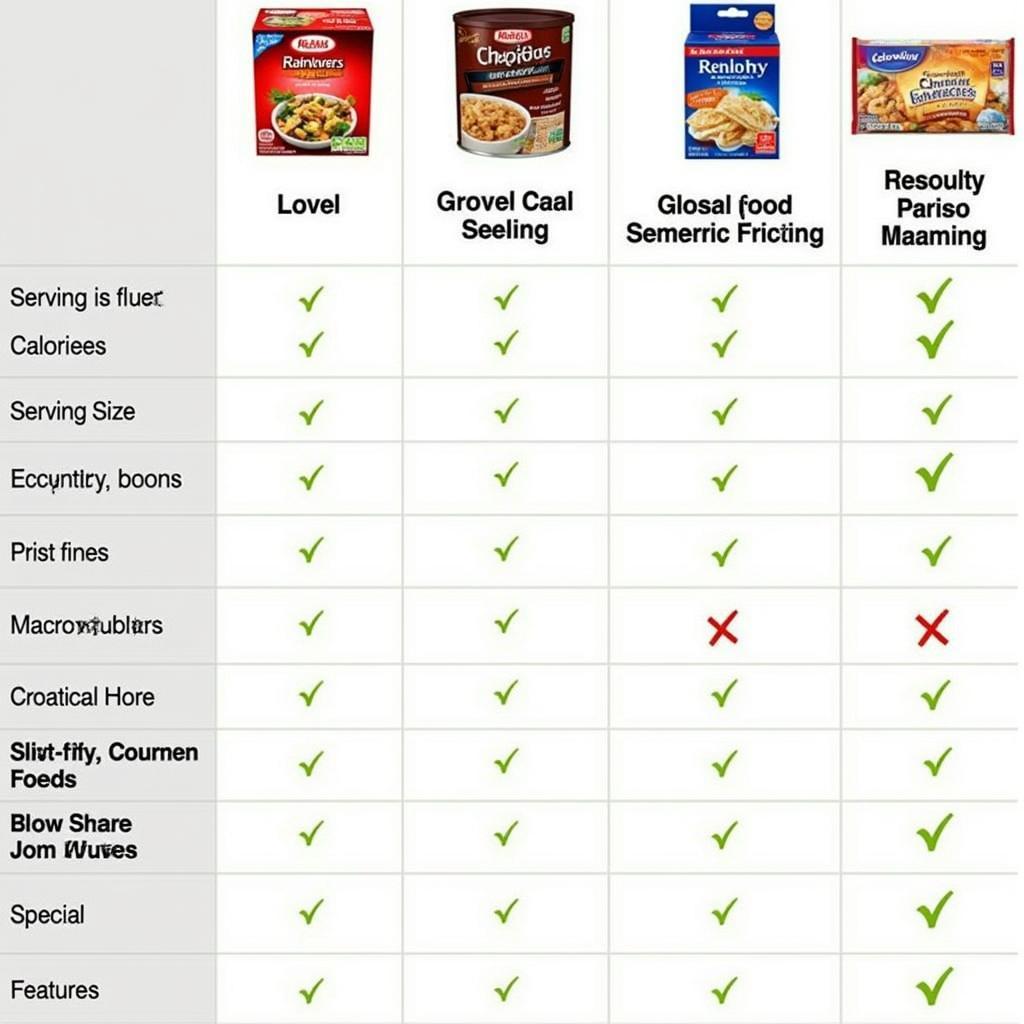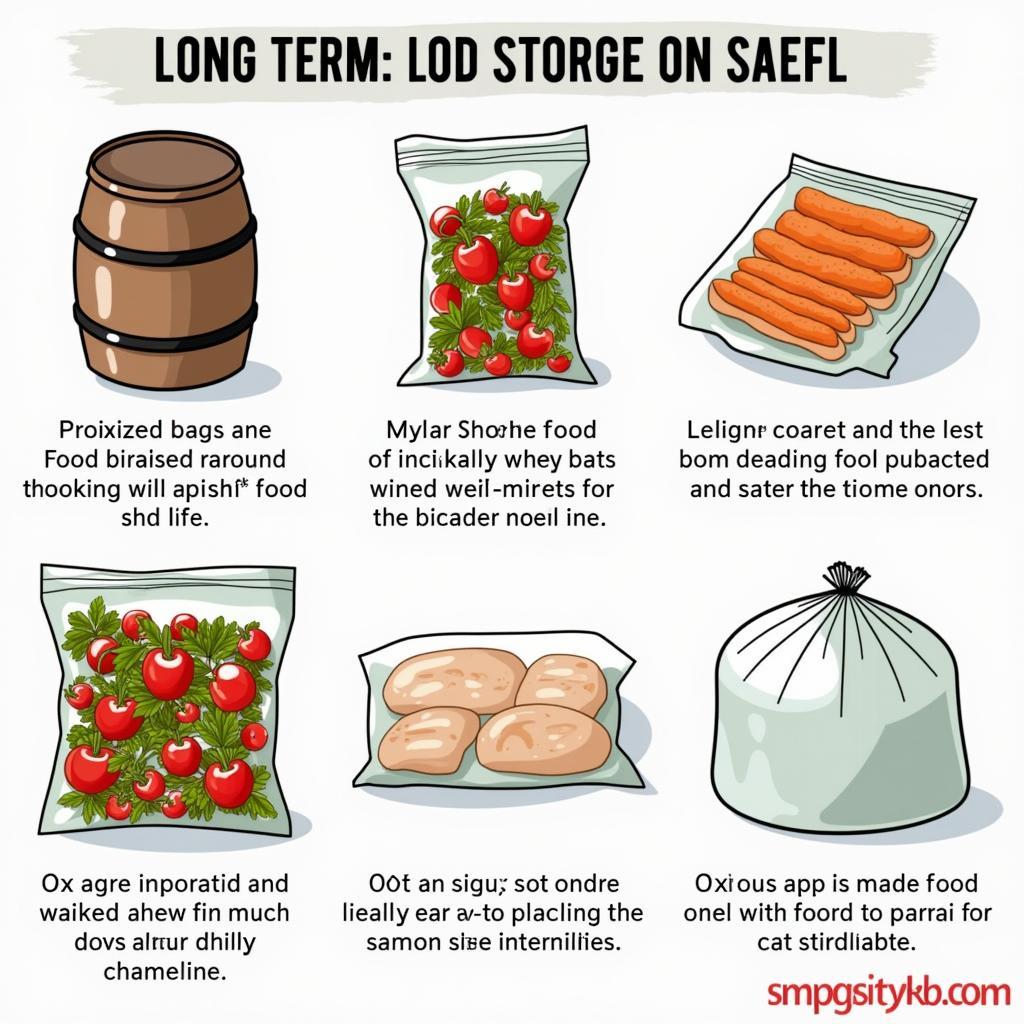Emergency Food Packs are essential for navigating unexpected situations, from natural disasters to temporary power outages. Having readily available sustenance not only provides physical nourishment but also offers peace of mind during stressful times. This comprehensive guide explores everything you need to know about emergency food packs, from building your own to choosing commercially available options. We’ll also cover storage, shelf life, and essential considerations to ensure you’re truly prepared. Let’s dive in!
Building Your Own Emergency Food Pack
Creating a personalized emergency food pack allows you to cater to specific dietary needs and preferences. Check out our dried food supplies for ideas! Here’s a step-by-step guide to get you started:
- Assess your needs: Consider the number of people you need to feed and the duration for which you need supplies. A general guideline is to aim for a minimum of three days’ worth of food per person.
- Choose non-perishable items: Opt for foods with a long shelf life that require minimal or no preparation. Examples include canned goods, dried fruits, nuts, granola bars, and dehydrated meals.
- Prioritize nutritional value: Focus on nutrient-dense foods that provide essential vitamins and minerals. This includes protein sources, whole grains, and fruits and vegetables.
- Consider dietary restrictions: If you have allergies or specific dietary needs, be sure to select foods that meet those requirements.
- Package and store properly: Use airtight containers to protect your food from moisture and pests. Store in a cool, dry place, away from direct sunlight.
Choosing Commercially Available Emergency Food Packs
If building your own pack seems daunting, numerous pre-packaged options are available. These kits offer convenience and often come with a guaranteed shelf life. When choosing a commercial pack, consider factors such as serving size, nutritional content, and ease of preparation. Some packs even specialize in activa food for specific dietary needs.
What are the key factors to consider when choosing pre-packed emergency food? Serving size, nutritional value, ease of preparation, and shelf life are crucial considerations.
 Comparing Different Commercial Emergency Food Packs
Comparing Different Commercial Emergency Food Packs
Essential Considerations for Emergency Food Packs
Beyond the food itself, there are other vital aspects to consider:
- Water: A safe and reliable water source is as important as food. Store enough water for drinking and basic hygiene.
- Cooking and eating utensils: Include a portable stove, fuel, cooking pot, plates, and utensils. Consider our thermal carrier for food to keep meals warm.
- First aid kit: A well-stocked first aid kit is crucial for addressing minor injuries.
- Sanitation supplies: Hand sanitizer, soap, and toilet paper are essential for maintaining hygiene.
- Emergency communication: Include a hand-crank radio or other means of staying informed during emergencies.
“Proper storage is key to maintaining the shelf life of your emergency food supplies,” says Dr. Sarah Miller, a certified nutritionist. “Airtight containers in a cool, dark, and dry environment are essential.”
Food Barrel Pack: A Long-Term Solution
For extended emergencies, a food barrel pack can be a wise investment. These packs typically contain a larger quantity of food with an extended shelf life, often lasting for several years.
Storing emergency food for hiking trips? Check out our suggestions for lightweight and nutritious food storage for hiking.
 Long-Term Emergency Food Storage Solutions
Long-Term Emergency Food Storage Solutions
Conclusion
Emergency food packs are a cornerstone of preparedness. Whether you build your own or opt for a pre-packaged kit, having access to essential sustenance can make a significant difference during challenging times. By following the guidelines outlined in this article, you can ensure you and your loved ones are well-equipped to handle any unforeseen circumstances.
FAQ
- What is the recommended shelf life for emergency food packs?
- What are the best foods to include in a DIY emergency food pack?
- How much water should I store per person?
- What are the essential non-food items to include in an emergency kit?
- Where should I store my emergency food pack?
- What are the different types of commercially available emergency food packs?
- How often should I rotate my emergency food supplies?
Need assistance? Contact us at Phone Number: 02437655121, Email: minacones@gmail.com Or visit us at: 3PGH+8R9, ĐT70A, thôn Trung, Bắc Từ Liêm, Hà Nội, Việt Nam. We have a 24/7 customer service team.